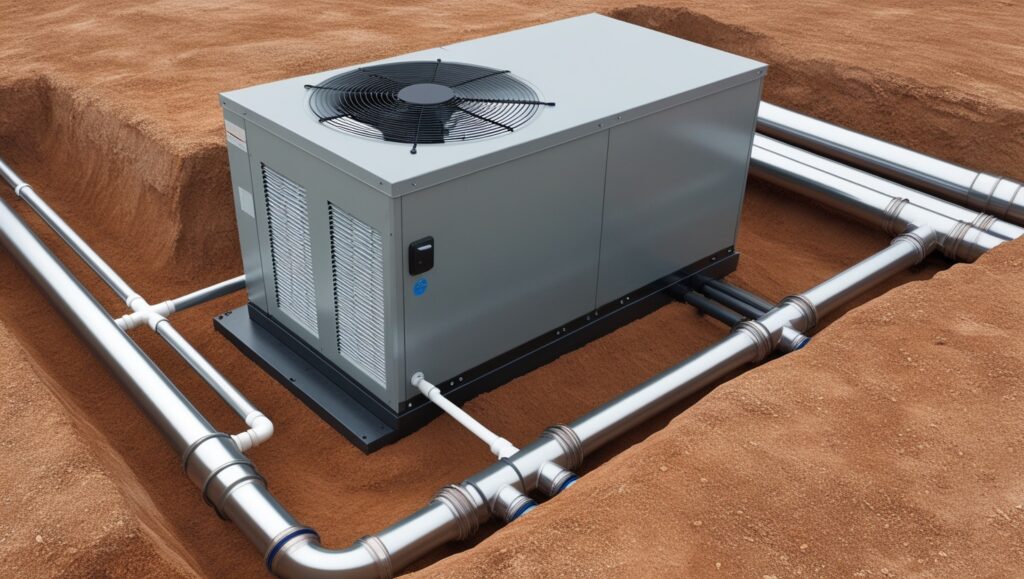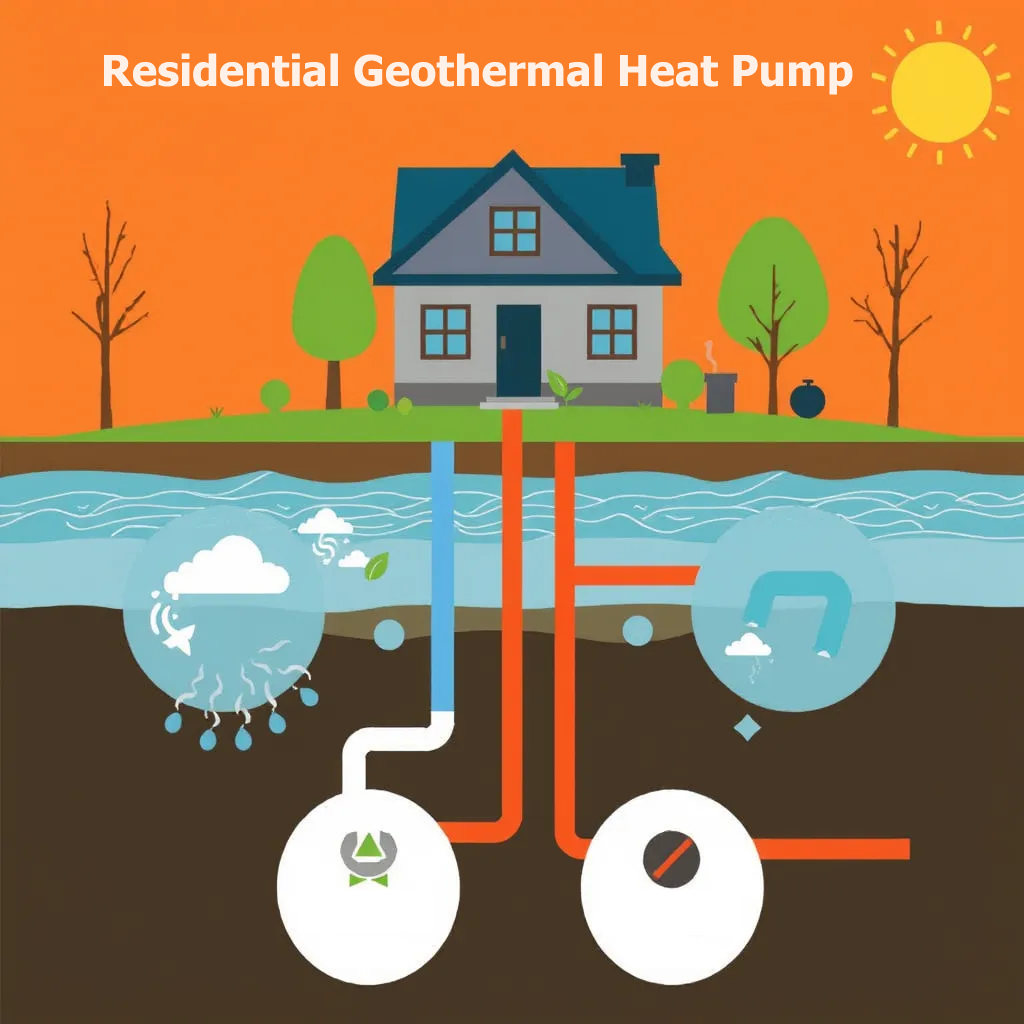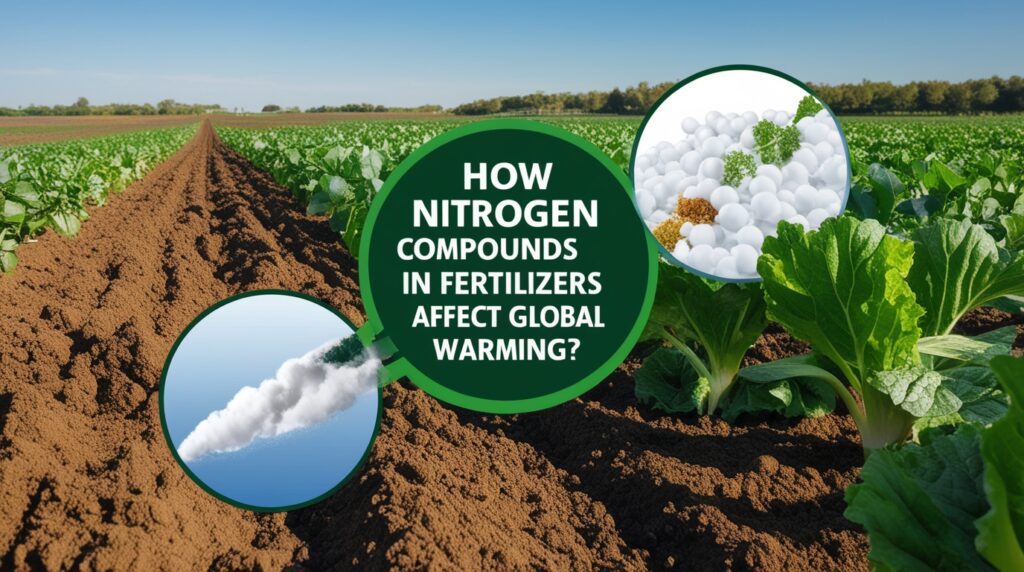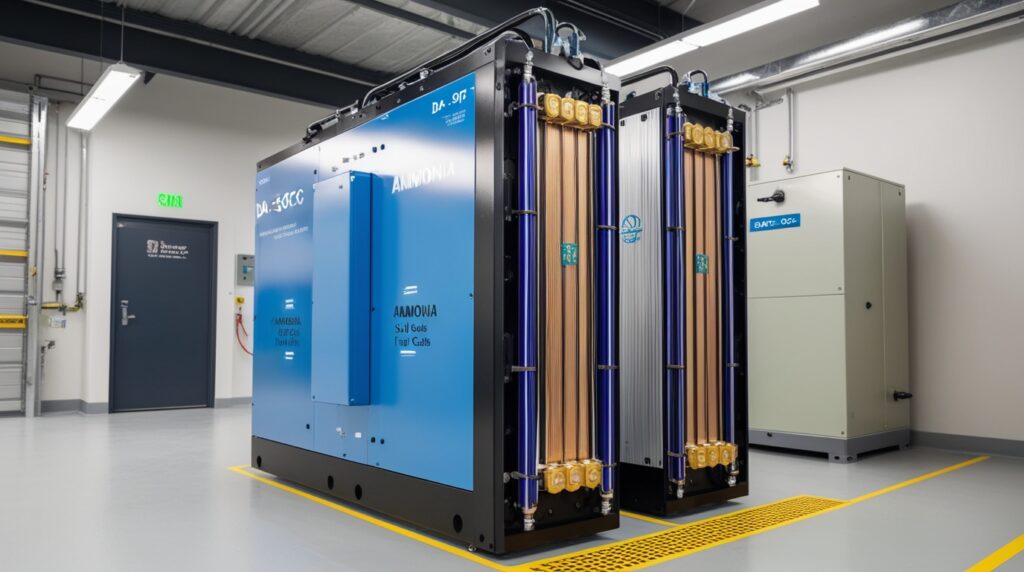
Introduction
Residential Geothermal Heat Pump (GHP) systems are energy-efficient technologies that harness the Earth’s stable underground temperatures for heating and cooling residential buildings. By utilizing a series of underground pipes, GHPs transfer heat between the home and the ground, significantly reducing reliance on fossil fuels and lowering greenhouse gas emissions. Notable for their ability to decrease energy bills by up to 60% compared to conventional HVAC systems, GHPs have gained traction as a sustainable alternative amid growing environmental concerns and rising energy costs in recent decades. The adoption of residential geothermal heat pumps has been catalyzed by advancements in technology since their inception in the mid-20th century, which have improved their efficiency and accessibility.
By the 1980s, increasing energy prices and government incentives further spurred interest in GHPs, establishing them as a viable option for energy-efficient home heating and cooling. The U.S. Department of Energy has highlighted their potential role in decarbonizing residential buildings and reducing electricity demand, reflecting a broader commitment to sustainable energy solutions. Despite their advantages, the initial installation costs of geothermal systems can be prohibitive, typically ranging from $30,000 to $50,000, which poses a challenge for widespread adoption. Moreover, installation complexities and the need for extensive site assessments may deter some homeowners.
As a result, public perception often underestimates the long-term economic and environmental benefits that GHPs can provide, leading to misconceptions about their feasibility and maintenance requirements. As climate change remains a pressing global issue, residential geothermal heat pumps are increasingly recognized as an effective strategy for promoting energy efficiency and sustainability. The ongoing development of innovative technologies and government incentives continues to enhance their appeal, positioning GHPs as a key player in the transition toward cleaner energy solutions for homes.
History
Early Development
Geothermal energy has been harnessed for thousands of years, with ancient civilizations using hot springs for bathing and heating. The modern application of geothermal energy, particularly in residential settings, began in the 20th century. The first geothermal heat pumps were developed in the 1940s and 1950s, utilizing the earth’s stable underground temperature for heating and cooling buildings.
Advancements in Technology
By the 1970s, advancements in technology and a growing awareness of energy efficiency led to a renewed interest in geothermal heating systems. During this time, the first commercial geothermal heat pump systems were installed in residential buildings, marking a significant milestone in the adoption of this renewable energy source.
Growth and Expansion
The growth of the geothermal heat pump industry accelerated in the 1980s and 1990s, driven by increasing energy costs and environmental concerns regarding fossil fuel consumption. By this time, it became clear that geothermal systems could reduce electricity bills by up to 60% compared to traditional heating methods. Additionally, various government incentives and educational initiatives helped to spread awareness and encourage adoption of geothermal technologies among homeowners.
Current Trends
In recent years, the geothermal heat pump market has continued to evolve, benefiting from innovations in drilling and installation techniques, as well as improved heat pump efficiency. The U.S. Department of Energy has recognized geothermal heat pumps as a viable strategy for decarbonizing buildings and reducing reliance on new electricity generation sources. The continued expansion of this technology highlights its importance in promoting sustainable energy solutions and combating climate change.
Technology
Geothermal heat pumps (GHPs), also known as ground-source heat pumps, utilize the Earth’s stable temperatures to provide efficient heating and cooling solutions for residential and commercial applications. This technology exploits the natural heat stored beneath the Earth’s surface, which remains relatively constant throughout the year.
Heat Exchange Process
GHPs operate by transferring heat between the building and the ground via a system of pipes known as ground loops. These loops can be configured in various ways, including horizontal, vertical, or pond/lake systems, depending on the specific site conditions and space availability. During the winter, the heat pump extracts heat from the ground and transfers it indoors, while in the summer, the process is reversed, with the heat pump dissipating excess heat back into the ground. This unique mechanism allows GHPs to maintain a high level of energy efficiency compared to traditional heating and cooling systems, which often rely on fossil fuels and generate higher carbon emissions.
System Types and Installation
There are several types of GHP systems available, including closed-loop and open-loop systems. Closed-loop systems are more prevalent due to their versatility and lower environmental impact. Closed-loop systems consist of pipes filled with a mixture of water and antifreeze, facilitating heat exchange without affecting groundwater supplies. Proper installation is crucial to ensure the system operates at peak efficiency, and it is recommended to engage qualified professionals for this process.
Efficiency and Sustainability
The efficiency of geothermal heat pumps is significant, as they consume less energy while providing optimal heating and cooling. This efficiency contributes to environmental sustainability by reducing the need for new electricity generation and decreasing greenhouse gas emissions. Innovations in GHP technology are continually emerging, with ongoing research aimed at enhancing efficiency, developing smart controls for better energy management, and creating advanced loop systems that can potentially lower costs and improve performance further.
Applications
GHPs are adaptable for use in various climates and settings, ranging from individual homes to larger networks of buildings, such as college campuses and residential developments. Their versatility allows for installation during new construction or retrofitting of existing structures, making them a valuable option for diverse energy needs across the nation. The increasing adoption of geothermal heat pump technology underscores its potential to significantly contribute to energy savings and sustainability, positioning it as a viable strategy for reducing reliance on fossil fuels in heating and cooling applications.

Installation
Installing a residential geothermal heat pump (GHP) involves several steps and considerations to ensure optimal performance and efficiency. The process can be complex, particularly for retrofitting existing homes, and it typically begins with a thorough site assessment.
Site Assessment and Feasibility
The installation process starts with a comprehensive site evaluation, where qualified technicians analyze soil composition, land area, and the home’s heating and cooling loads. This assessment helps determine the suitability of the property for a geothermal system and includes a Manual J load calculation, which factors in the square footage, insulation, and number of windows and doors in the home. Additionally, the installer will consider local geology and hydrology, which can influence the effectiveness of heat transfer and potential environmental impacts.
Installation Process
Ground Loop Installation
Once the site is deemed suitable, the next step involves installing the ground loop system, which transfers heat between the earth and the heat pump. Depending on space availability and soil conditions, either horizontal trenches or vertical boreholes are dug to accommodate the piping. This process can take several days and may temporarily disrupt landscaping. For properties with sufficient water sources, pond or lake loops can be utilized, while open-loop systems may be implemented in areas with high-quality groundwater.
Indoor Unit Setup
Following the ground loop installation, the indoor heat pump unit is installed. If retrofitting an existing system, any outdated heating or cooling units must be removed first. The new heat pump will be connected to the existing ductwork or, if necessary, new ducts will be installed throughout the home to facilitate the distribution of heated or cooled air.
Electrical Connections and Testing
Once the heat pump is in place, it is connected to the ground loop and the home’s electrical system. This may require upgrades to the electrical infrastructure, such as installing a higher capacity breaker panel. After all connections are made, the system undergoes rigorous testing to ensure safe and efficient operation.
Challenges and Considerations
While geothermal systems offer numerous benefits, they also present potential challenges. High initial costs can deter homeowners, especially if extensive excavation is needed for retrofit projects. Moreover, not all properties are suitable for ground loop installation due to space limitations or unfavorable soil conditions. Finding qualified installers may also be challenging in certain areas, further complicating the installation process.
Efficiency and Performance
Energy Efficiency Ratings
The efficiency of geothermal heat pump systems is primarily assessed through several key ratings, including the Seasonal Energy Efficiency Ratio (SEER) and the Heating Seasonal Performance Factor (HSPF). SEER measures cooling efficiency over an entire cooling season, while HSPF evaluates heating efficiency over a heating season. Higher ratings in both categories indicate better energy performance and lower operational costs for homeowners.
Geothermal systems often achieve energy efficiency ratings exceeding 300%, meaning they can produce more energy in the form of heating or cooling than the electricity consumed. For example, while air source heat pumps (ASHPs) typically have a heating efficiency around 400%, geothermal heat pumps (GSHPs) can reach efficiencies as high as 600%.
Coefficient of Performance (COP) and Energy Efficiency Ratio (EER)
Another critical measure of efficiency is the Coefficient of Performance (COP), which compares the amount of heating or cooling produced to the amount of electricity consumed. A higher COP signifies better energy efficiency. Additionally, the Energy Efficiency Ratio (EER) determines cooling efficiency by dividing the cooling output by the electrical input, where a higher EER indicates greater energy savings.
Environmental Benefits
Geothermal heat pumps contribute significantly to environmental sustainability. Their exceptional energy efficiency ratings not only result in substantial energy savings but also lead to a reduced reliance on fossil fuels, thus decreasing overall greenhouse gas emissions. By harnessing renewable geothermal energy, these systems promote a cleaner environment and a lower carbon footprint.
Cost-Effectiveness
The long-term cost-effectiveness of geothermal heat pump systems is another notable advantage. While the initial installation costs may be higher than traditional heating and cooling systems, the significant energy savings and reduced utility bills over time make geothermal systems a financially viable option for many homeowners. Moreover, optimizing the design and installation of these systems is crucial to meet performance expectations and maximize savings. Factors such as regional geothermal resources, demand, and supply potential should be carefully considered during the planning process.
Costs
The financial implications of installing a residential geothermal heat pump system can be significant, with various factors influencing the overall costs. Initial investments for geothermal systems often exceed those of conventional heating, ventilation, and air conditioning (HVAC) systems. For instance, the establishment of a traditional HVAC system in a residential building was calculated to be approximately 190,230 EGP, whereas a vertical closed-loop geothermal system was estimated at 159,879.758 EGP, indicating that geothermal installation could be comparatively less expensive in some cases.
Initial Costs
The upfront costs for geothermal systems can range widely. On average, the installation of a geothermal heat pump might cost between $30,000 and $50,000, which includes drilling and installation. Factors such as the size of the home and specific site conditions can lead to variations in pricing. For example, a 2,000-square-foot home typically incurs costs between $10,000 and $30,000, while larger properties may exceed $50,000.
Financial Incentives
To offset these initial costs, many federal, state, and local incentives are available, often covering between 30% to 60% of total geothermal system expenses. For instance, the federal Residential Renewable Energy Tax Credit provides a tax credit of 30% of the total installation cost for systems that meet Energy Star criteria. This can make geothermal systems financially competitive with conventional HVAC equipment, especially as installation practices evolve to further reduce costs.
Long-Term Savings
Despite the higher upfront costs, geothermal systems offer substantial long-term savings due to their lower operating costs and energy consumption. Homeowners can expect to save approximately 50% on heating bills, leading to a payback period that may range from 4 to 12 years, depending on whether the system is installed in a new construction or as a replacement for an existing HVAC system. As such, while the initial investment may be considerable, the potential for reduced monthly energy bills makes geothermal systems an attractive option for many homeowners seeking long-term financial benefits and sustainability.
Environmental Impact
Residential geothermal heat pumps (GHPs) have a significant positive impact on the environment, primarily by reducing greenhouse gas emissions and promoting energy efficiency. With nearly 500,000 geothermal heat pumps installed annually in the United States, these systems collectively prevent over 1 million metric tons of carbon dioxide from being released into the atmosphere each year. This substantial reduction in emissions contributes to the broader goal of mitigating climate change, which is increasingly critical given the dual challenges of climate change and energy supply facing the world today.
Life Cycle Assessment
Life cycle assessments (LCA) are instrumental in understanding the environmental impact of geothermal technologies, including GHPs. An LCA evaluates the total greenhouse gas output throughout the system’s life—from material acquisition and construction to operation and waste management. This holistic view helps to illustrate the benefits of geothermal systems, particularly in comparison to fossil fuel-based energy sources, which have considerably higher life-cycle emissions. For instance, electricity generated from natural gas can produce between 0.6 and 2 pounds of carbon dioxide equivalent per kilowatt-hour, while coal can result in even higher emissions.
Resource and Land Use
Although GHPs require some land for installation and operation, they generally have a lower impact on the environment compared to other energy generation methods. Large-scale geothermal projects can disrupt natural habitats, but residential systems typically utilize smaller plots of land and integrate well within existing landscapes. Furthermore, GHPs employ water efficiently, which is critical given the ongoing challenges related to water usage in energy production. These systems are designed to minimize water consumption and protect local ecosystems by utilizing closed-loop systems that recirculate water.
Long-Term Sustainability
The deployment of residential geothermal heat pumps aligns with sustainability goals by offering a renewable energy source that can operate for decades with minimal environmental degradation. Over an average lifespan of 20 years, each installation can save more than 24 trillion Btus of electrical energy, leading to substantial cost savings for consumers—approximately $500 million annually at current energy prices. As the adoption of GHPs increases, their role in reducing the carbon footprint of residential heating and cooling becomes ever more significant, making them an essential component of a sustainable energy future.
Maintenance
Proper maintenance of residential geothermal heat pump systems is essential for ensuring optimal performance and extending the lifespan of the equipment. Although geothermal systems are renowned for their low maintenance requirements, regular upkeep is necessary to maximize efficiency and prevent potential issues.
Maintenance Schedule
Creating a maintenance calendar is a proactive approach to remind homeowners of routine tasks, including filter replacements, cleaning, and system checks. Following the manufacturer’s guidelines for recommended maintenance intervals is crucial to maintain system integrity.
Professional Inspections
Scheduling annual professional inspections is highly recommended. Qualified technicians can detect and address potential issues before they escalate into significant problems. They are equipped to identify hidden complications, ensure proper system operation, and provide expert advice for optimization.
Best Practices for Homeowners
Homeowners can adopt several best practices to enhance the longevity of their geothermal systems:
- Area Maintenance: Keep the outdoor unit free of debris and vegetation to ensure unrestricted airflow.
- Weather Protection: Protect the system from extreme weather conditions, which can compromise its efficiency.
- Proactive Monitoring: Regularly monitor for any signs of trouble, such as unusual noises or reduced efficiency, to address issues promptly.
- Water Quality Management: For open-loop systems, monitoring water quality and potentially installing treatment systems can help prevent corrosion and maintain performance.
Routine Maintenance Tasks
Several routine tasks are vital for maintaining geothermal systems:
- Filter Changes: Regularly cleaning or replacing air filters is essential to maintain proper airflow and efficiency.
- System Inspections: Conduct routine checks on the heat pump and loop system to ensure they are operating correctly and to identify any wear or damage.
- Flushing the System: Periodically flushing the system can remove sediment and enhance performance.
Troubleshooting and Repairs
Homeowners should be aware of when to seek professional help. Persistent or recurring issues, such as unusual noises, leaks, or electrical problems, require expert intervention. Timely repairs can prevent small issues from developing into major complications, thereby preserving the efficiency and longevity of the system.
Electrical and Control System Maintenance
Geothermal systems include electrical and control components that are prone to issues such as blown fuses and faulty wiring. Regularly checking connections and replacing damaged parts can prevent disruptions in operation. Monitoring control systems is equally important, as improper functioning of valves or sensors can significantly impact heating and cooling efficiency. By following these maintenance guidelines, homeowners can ensure that their geothermal heat pump systems remain efficient, reliable, and capable of providing optimal heating and cooling for years to come.
Regulations and Standards
Overview
The regulatory landscape for residential geothermal heat pumps varies significantly between different regions, with specific standards governing both above-ground and below-ground installations. Most countries, particularly developed ones, are increasingly adopting renewable energy sources, including geothermal systems, as part of their efforts to combat climate change and reduce greenhouse gas emissions associated with buildings, which account for a substantial portion of energy consumption and CO2 emissions globally.
Above-Ground Installation Standards
Above-ground installations, which include equipment such as pipelines, pumps, valves, heat exchangers, and refrigeration components, are generally not subject to specific geothermal regulations. Instead, these installations are governed by widely recognized standards set forth by organizations such as the American Society of Testing and Materials (ASTM) and the American Society of Heating, Refrigerating, and Air-Conditioning Engineers (ASHRAE) in the United States. Local building codes may also dictate specific requirements for installations, although most states have not yet adopted comprehensive codes for closed-loop geothermal systems.
Below-Ground Installation Standards
In contrast, below-ground equipment standards, especially for high-temperature geothermal resources (above 100°C), are typically governed by state and national regulations that mandate specialized requirements such as blow-out preventers and drilling muds. These regulations are enforced and inspected by local geological and mineral industries departments. Conversely, low-temperature resources (below 100°C) are usually managed under standard water well regulations by water resource departments or similar agencies.
Maintenance and Inspection Guidelines
To ensure optimal performance and safety of geothermal systems, regular maintenance and professional inspections are essential. Homeowners are encouraged to create a maintenance calendar that includes routine tasks like filter replacements and system checks.. Following manufacturer guidelines and scheduling regular inspections can help detect potential issues early, preventing them from escalating into major problems. It is crucial to maintain clear access around outdoor units and to protect systems from extreme weather conditions, as these factors can impact system longevity and efficiency.
Training and Certification
With the growing popularity of geothermal systems, there is a pressing need for more training and certification programs for HVAC professionals. Poor installations can lead to significant performance issues and customer dissatisfaction. Organizations such as the International Ground Source Heat Pump Association (IGSHPA) are actively working to improve training in geothermal applications, ensuring that technicians are well-prepared to meet the demands of the industry and maintain high installation standards. The introduction of new installation standards, such as the Canadian-U.S. #448 Installation Standard, aims to boost job quality and increase confidence in geothermal technology among building jurisdictions.
Case Studies
Impact on Energy Consumption
One significant case study explored the impact of neighborhood spatial characteristics on microclimates in hot arid climates, which demonstrated the benefits of integrating geothermal heating and cooling systems in residential buildings. The research highlighted that traditional HVAC systems consumed considerable energy, exacerbating the depletion of fossil fuels and increasing carbon emissions, while the incorporation of geothermal systems significantly mitigated these effects, leading to improved thermal comfort and reduced environmental impact.
Geothermal Systems in Existing Homes
In a detailed assessment of retrofitting existing homes with geothermal systems, it was noted that proper site evaluations and assessments of the current HVAC system and home insulation were critical for successful integration. The installation process often involved the setup of ground loops and indoor units, which required careful coordination among HVAC technicians, plumbers, and excavators. This case study illustrated that retrofitting can be effectively managed, making geothermal solutions accessible for a wide range of residential setups.
Long-term Sustainability
Another important analysis focused on long-term reservoir behavior in geothermal developments. This study evaluated various sustainable utilization strategies, comparing different geothermal development scenarios to identify environmental and economic benefits. The case histories revealed that sustainable management practices not only enhanced the efficiency of geothermal systems but also minimized adverse environmental impacts, showcasing the viability of geothermal energy as a long-term solution for residential heating and cooling needs.
Comparison of Geothermal Systems
A comparative study was conducted on the efficiency of geothermal heat pump systems relative to traditional heating and cooling systems. The findings indicated that geothermal systems, utilizing the stable temperatures of the shallow earth, outperformed conventional methods in energy efficiency. Additionally, the longevity of geothermal equipment—often lasting up to 30 years—contrasted favorably with traditional systems, which tend to have shorter operational lifespans.
Case Study in Saudi Arabia
In a specific case study at Ain Al Harrah, Saudi Arabia, the exploration of geothermal energy reserves illustrated the potential for geothermal systems in regions with high underground temperatures. This case emphasized that geothermal systems can be adapted to diverse climates and geographical conditions, proving effective even in areas traditionally deemed unsuitable for such technologies. These case studies collectively underline the diverse applications, benefits, and sustainability of residential geothermal heat pump systems, reinforcing their growing relevance in the energy sector.
Future Trends
Innovations in Geothermal Heat Pump Technology
The future of geothermal heat pump technology is poised for significant advancements aimed at enhancing efficiency, sustainability, and cost-effectiveness. Continuous research is leading to exciting developments that promise to revolutionize how we heat and cool our homes.
Enhanced Efficiency
Researchers are focusing on new materials and designs that could significantly increase the efficiency of geothermal heat pumps. These advancements may lead to greater energy savings and reduced operating costs, making geothermal systems an even more attractive option for homeowners.
Smart Control Systems
The emergence of smart control systems is another exciting trend. These systems will allow homeowners and businesses to monitor and control their geothermal heat pumps remotely, optimizing energy usage and enhancing overall efficiency. This technology aligns with the growing trend of smart homes and energy management solutions.
Advanced Loop Systems
Research into new loop systems is also underway, potentially offering more efficient and cost-effective alternatives to current geothermal technologies. Enhanced loop systems could improve the performance of geothermal heat pumps, making them more adaptable to various environmental conditions.
Environmental Considerations
As the demand for sustainable energy solutions grows, geothermal heat pumps are increasingly recognized for their minimal environmental impact. They produce no greenhouse gas emissions and utilize the Earth’s natural heat, making them a compelling choice for eco-conscious consumers. Furthermore, the recycling of geothermal heat pump components can contribute to a circular economy, reducing waste and conserving resources. By recycling materials such as copper and steel, we can lessen the need for new material extraction and minimize energy consumption associated with manufacturing.
Global Adoption and Future Potential
With a growing global focus on renewable energy, many countries are exploring geothermal energy as an alternative source for heating and cooling buildings. This trend is particularly relevant in regions facing rising energy demands due to climate and population pressures. Countries like the USA, UK, Saudi Arabia, and India have begun implementing geothermal energy systems extensively, though there is still untapped potential in tropical and subtropical climates. The future of geothermal heat pump technology not only looks promising but also plays a crucial role in addressing the dual challenges of climate change and energy consumption, paving the way for a more sustainable future.
Common Misconceptions
Myth: Geothermal Systems Are Only for New Construction
A prevalent misconception is that geothermal systems are suitable only for new builds. In reality, while these systems can be more easily installed during new construction, they can also be retrofitted into existing homes. Geothermal systems use underground pipes to access stable earth temperatures, which can be installed in many yards, enabling homeowners to benefit from geothermal heating and cooling regardless of their home’s age. Retrofitting may involve additional considerations and modifications, but it is a viable option for many homeowners when discussed with HVAC professionals.
Confusion with Hot Rock Geothermal Energy
There is often confusion between geothermal heat pumps (GHPs) and hot rock geothermal energy. The term “geo” correctly refers to the earth, but many mistakenly associate it with steam-generated electricity from deep underground sources. In contrast, GHPs utilize a thermal battery via pipes buried 6 to 600 feet underground, circulating water within a temperature range of 35-85°F. This process does not consume water, unlike traditional geothermal methods that rely on significant water resources.
Installation Complexity
Another misconception is that any engineer or designer can easily design a geothermal heat pump system. In truth, while GHP technology is not overly complicated, successful installation often requires specialized knowledge of geological and hydrological conditions. Site surveys and excavation are necessary for the installation of ground loops, which can add costs and logistical challenges that discourage some homeowners from making the switch to geothermal systems.
Economic Viability
Many believe that the financial payback from investing in a geothermal system is quick and straightforward. However, for an average-sized home, the initial installation cost can reach around $30,000, with savings on heating bills averaging 50%. Unfortunately, the return on investment may take years, particularly for moderately sized homes where alternative energy efficiency improvements might offer better returns. This leads some to prioritize other renovations, such as enhancing insulation or upgrading windows, over installing a geothermal system.
Longevity and Maintenance
Homeowners often underestimate the lifespan and maintenance requirements of geothermal systems. Geothermal systems generally last longer than traditional HVAC systems, but potential buyers should consider local climate impacts on performance and efficiency. While geothermal systems may carry a higher upfront cost, their long-term benefits in energy efficiency and sustainability often justify the initial investment. They significantly reduce greenhouse gas emissions compared to conventional systems, making them a more environmentally friendly choice over time.
Homeowner Experiences
Homeowners considering a geothermal heat pump often weigh various factors before making a decision. Many report that geothermal systems, while initially more expensive to install, provide significant long-term savings and environmental benefits. These systems typically offer lower operating costs and reduced energy consumption compared to traditional air-source heat pumps, making them a financially sound investment over time.
Evaluating Installation Considerations
The installation of geothermal systems can be intrusive, involving excavation of the yard to install ground loops, which might deter some homeowners, especially those with smaller properties. In such cases, the benefits may not justify the disruption if the space is limited or if the homeowner does not plan to stay long-term. However, those who choose to invest in geothermal often do so with the intention of residing in their homes for an extended period, as they can capitalize on the long-term cost savings and increased comfort.
Maintenance Insights
Homeowners emphasize the importance of regular maintenance to ensure optimal performance of their geothermal systems. This includes routine tasks like checking refrigerant levels, cleaning filters, and scheduling professional inspections. Many users find that adhering to maintenance guidelines not only extends the system’s lifespan but also enhances its efficiency.
Professional Assistance
When issues arise, homeowners highlight the value of professional inspections and repairs. Signs that warrant professional help include unusual noises, leaks, or persistent electrical problems. Timely repairs can prevent minor issues from escalating into major problems, ensuring that the geothermal system remains efficient and cost-effective.
Incentives and Cost Savings
Homeowners also appreciate the financial incentives associated with geothermal installations. For instance, those who install geothermal heat pumps may be eligible for the Investment Tax Credit, allowing them to claim a significant portion of the installation costs as a federal tax credit. This can lead to thousands of dollars in savings, further justifying the initial investment.



